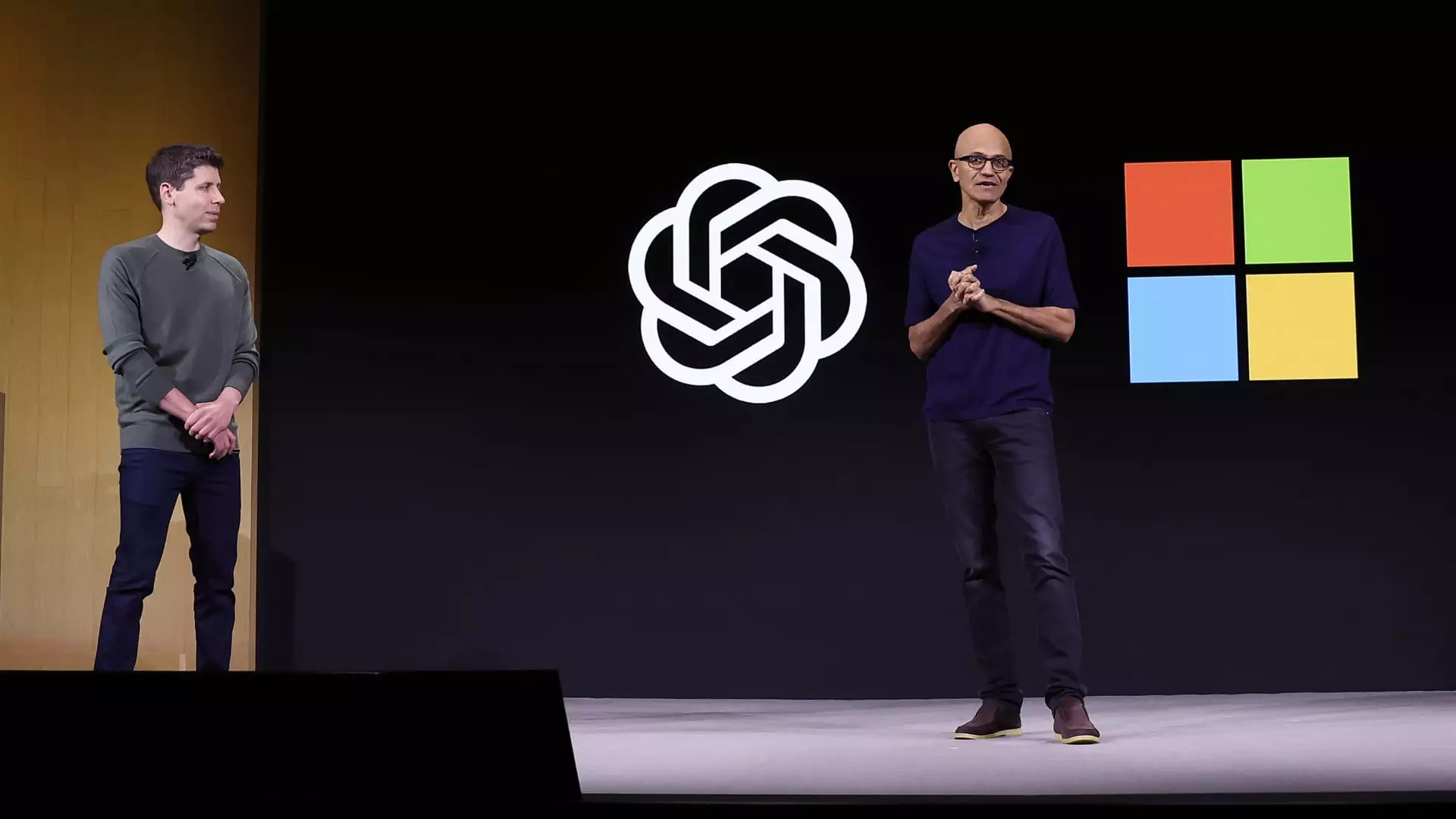Microsoft’s foray into the realm of artificial intelligence, particularly through its substantial backing of OpenAI, has become a double-edged sword. In its recent earnings report, the software giant revealed an anticipated income decrease of $1.5 billion during the current quarter, largely attributed to the financial challenges faced by OpenAI. This striking figure prompts a closer examination of how such investments impact corporate valuations and the broader implications for the tech industry.
Historically, Microsoft has invested close to $14 billion in OpenAI, a substantial commitment that reflects its ambition to lead in the burgeoning field of generative artificial intelligence. While products like ChatGPT have spurred excitement and created a new industry, the underlying economics present a more sobering reality. Reports suggest that OpenAI anticipates losses of $5 billion this year against only $4 billion in projected revenue. Such figures raise crucial questions about the sustainability of this model and whether the initial promise of transformative technology can be harnessed into consistent profitability.
The recent commentary by Microsoft’s CFO, Amy Hood, sheds light on the company’s accounting practices concerning its investment in OpenAI. Under the equity method of accounting, Microsoft essentially registers its share of the earnings or losses from its investment. This transparency is vital for stakeholders who seek to understand how such partnerships affect overall financial health. However, Hood is keen to stipulate that these losses are not indicative of a deteriorating partnership with OpenAI; rather, they reflect the company’s ongoing commitment to developing differentiated intellectual property and generating revenue.
Despite reporting a fiscal first-quarter earnings beat, Microsoft’s stock price fell after the company’s future growth forecast fell short of market expectations. Investors are naturally cautious, especially when considering the heavy investment in a venture marked by substantial losses. Yet, Microsoft is attempting to balance its risk by not exclusively relying on OpenAI. The company recently announced that its GitHub service will integrate alternative AI models from competitors such as Google and Anthropic, indicating a strategic pivot that acknowledges market dynamics and potential volatility.
As Microsoft navigates these choppy waters, it is worth noting that its competitors are also deepening their investments in AI. Amazon’s recent $4 billion investment into Anthropic—a company founded by former OpenAI employees—underscores the intense race for supremacy in AI development. Both tech behemoths are aware that while AI could spell tremendous financial returns in the future, the path to profitability is fraught with unexpected detours.
Moreover, the situation raises concerns about the potential consequences of unsustainable burn rates within high-profile startups like OpenAI. With the industry closely monitoring how these investments will translate into marketable products, the balancing act of dedication versus fiscal prudence will be a narrative to watch closely.
While Microsoft’s investment in OpenAI has positioned the company as a pioneer in generative AI, the associated risks cannot be ignored. The losses anticipated in the short term serve as a stark reminder of the volatility inherent in groundbreaking technological ventures. Stakeholders will need to remain vigilant as Microsoft continues to refine its strategy, balancing innovation with financial sustainability as it steers through the complex landscape of artificial intelligence. The next few quarters could be crucial not only for Microsoft but for the viability of AI startups at large.

Leave a Reply